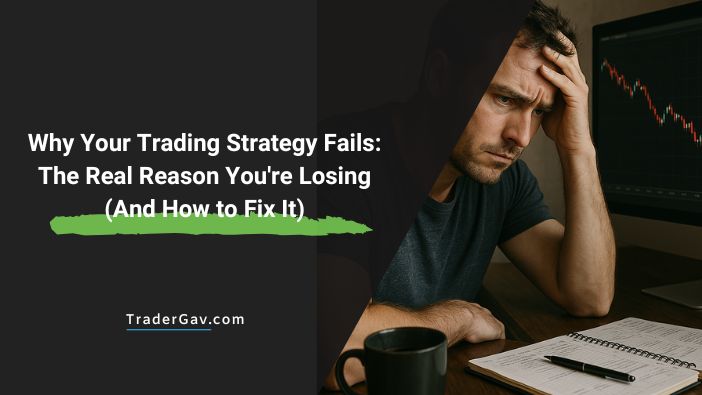
I remember sitting at my desk, coffee gone cold, charts looking like abstract art.
I had the strategy. The setup. The conviction.
And yet—
another losing trade.
You know that moment?
You stare at your screen like it personally betrayed you.
You think, “This system should work. What the hell’s going on?”
Let me cut through the noise.
It’s not the market.
It’s not your broker.
It’s not Mercury in retrograde.
It’s your system.
And more importantly—how little you’ve tested it.
Backtesting: The Thing You’re Probably Half-Doing
Let’s get real.
Most traders think backtesting means scrolling through charts and going,
“Oh yeah, that trade would’ve worked. That one too. Boom—edge confirmed.”
Stop right there.
That’s fantasy land.
That’s Monday-morning quarterbacking with Monopoly money.
Backtesting—real backtesting—means this:
- Going bar-by-bar, no skipping, no cheating.
- Logging entries, exits, drawdowns, wins, and absolute dumpster fires.
- Seeing how your system holds up during ugly market conditions—like when the market flatlines for six hours, or whipsaws your stop, then runs to target after stopping you out.
You don’t learn a system’s edge when it wins.
You learn it when it gets punched in the face.
Your System’s Not Broken. It’s Just Under-Tested.
Markets change.
One week it’s smooth trending moves. Next week? It’s chop city.
If your system only works in perfect conditions, guess what?
It’s not a system.
It’s a fluke dressed up as a strategy.
Refinement is how you go from decent to durable.
Start here:
- What market condition is this built for? Trending? Ranging?
- What session does it perform best in? (Hint: Asian session ≠ NY open)
- Can you filter out the garbage? Think news events, illiquid hours, or overlapping zones.
Refinement isn’t about adding 10 more indicators.
That’s just dressing your chart like a Christmas tree.
It’s about tightening logic, cutting clutter, and making your rules bulletproof.
Know Your Numbers, Or You’re Just Guessing
Would you invest in a business that couldn’t tell you its profits, losses, or survival rate?
Didn’t think so.
So why are you trading blind?
Here’s what every serious trader should track—no excuses:
- Win rate
- Average R:R
- Drawdown depth
- Session performance (Asia, London, NY)
- Max consecutive losses
If you can’t rattle those off, your strategy isn’t battle-tested.
It’s a hypothesis. And the market doesn’t care about hypotheticals.
The goal isn’t perfection. The goal is predictability.
5 Things You Can Do Today To Fix This
Ready to stop spinning your wheels? Let’s fix your system in five steps:
1. Pick one strategy.
No more jumping between methods. Choose your weapon and commit.
2. Manually backtest 100 trades.
Yes, manually. No shortcuts. Bar-by-bar. Old-school.
Use a spreadsheet or Notion. Track everything.
3. Find the flaws.
Which setups failed? Why? Was it the time, volatility, or structure?
4. Refine your rules.
Make them tighter. Smarter. Simpler.
Remove trades that don’t serve you. Add filters that actually work.
5. Forward test in real time (demo first).
Sim trade like it’s live. Feel the rhythm. See how it holds under pressure.
If it works, great—scale slowly. If it breaks, good—now you know where.
Backtesting Is Boring. But So Is Losing Money.
Let’s be honest.
Tracking trades? Not sexy.
Refining entry logic? Not exciting.
Doing 100 trade reviews? Downright tedious.
But…
- Confidence in your edge? Sexy.
- Consistent green weeks? Sexy.
- Growing your account without sweating bullets? You get the idea.
The traders who last?
They aren’t smarter.
They just put in the work before they went live.
So ask yourself—are you practicing for the fight, or stepping into the ring hoping for luck?
Final Thought
You don’t need a better system.
You need a better relationship with your system.
One based on data. Not vibes.
Refinement. Not hope.
Deliberate reps. Not impulsive trades.
So here’s your challenge—
Pick your system. Test it. Refine it. Track it.
You’ll hate the process…
But you’ll love what comes out the other side.
And the best part?
It’s all in your control.


Leave a Reply